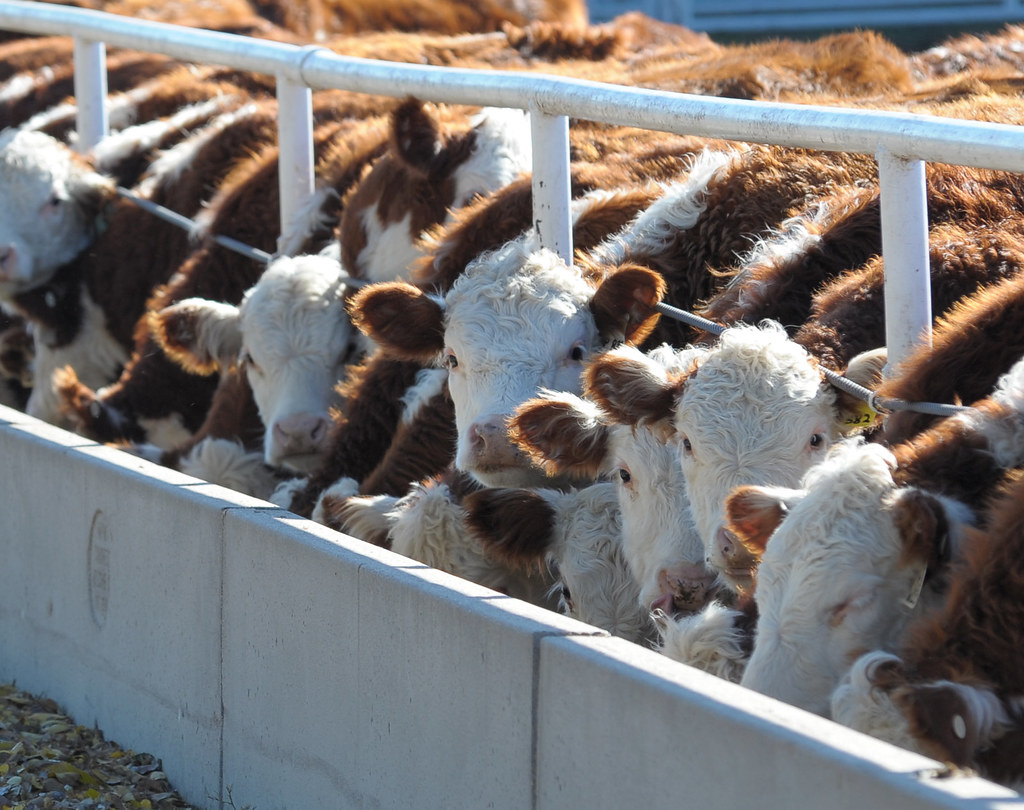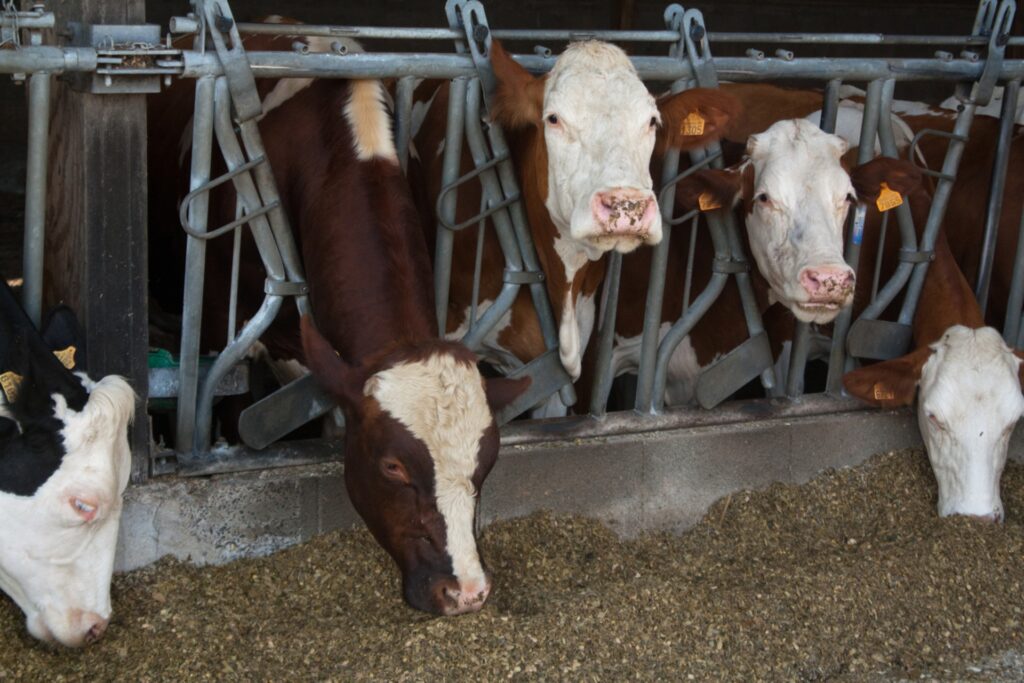This article is part of a series called Five Reasons Local Meat is Better. It describes Reason #2.
Large meat processors get their cattle from large feedlots where many animals are kept closely together. Even before a cow arrives at the stockyards, the animal is kept in close quarters with other cattle under stressful conditions. This can contribute to the spread of communicable diseases during transportation to the feedlots, such as shipping fever and brucellosis. However, the challenges for animal (and human) health don’t end there.

At large feedlots, cows are fed grain – a high percentage corn – in order to fatten them up so that are ready for slaughter sooner. This new diet can cause bloat, liver problems, and acidosis – an acidifying of the cow’s rumen. “Cows are not evolved to digest corn,” says Michael Pollan, author of a well-known book called the Ominivore’s Dilemma. “You’ve disturbed their digestion, and they’re apt to get sick, so then you have to give them drugs”.
The administration of drugs – antibiotics, more specifically – is part of managing large herds of cattle. Yet, crowded and stressful feedlot conditions present their own challenges. Antibiotics are added to grain-based animal feeds, but that also means there’s a greater risk of antibiotic resistance among feedlot cattle – and among the people who eat their meat. According to Scientific American, kids could be especially at risk.

In fairness, some local meat processors may also administer antibiotics to their herds. These herds are typically smaller, however, so there’s less of a risk of introducing an infected animal. With free range cattle, animals can also roam between pastures, which facilitates greater “social distancing” for a reduced risk of disease transmission. When free range practices are combined with rotational grazing, cows get what they need for digestive health – and rotational grazing is good for the grass as well. The video below explains.
Finally, consider the level of care that’s given to animals kept in smaller herds. Typically, the cows that local processors handle come from nearby farms where there’s a relationship with the animal. At a large feedlot, a cow is more likely to be a number than to have a name.
Thank you for reading this installment in our Five Reasons Local Meat is Better series, and check out Local Meat Has Better Nutritional Value if you missed it.
About This Series
This article is part of a series called Five Reasons Why Local Meat is Better. Here is the full list of articles.
- Better nutritional value
- Healthier, well-cared for animals
- Sounder agricultural practices
- Greater consumer value
- Lower costs
Thank you for reading them.